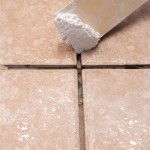Essential Aspects of Bathroom Water Supply Line Size
Understanding the size of your bathroom water supply line is crucial for ensuring proper water flow and pressure. This article delves into the essential aspects of bathroom water supply line size, providing guidance on choosing the right size for your specific needs. ### Importance of Water Supply Line Size The size of your bathroom water supply line directly impacts the amount of water that can flow through your fixtures. An undersized line can restrict water flow, leading to low water pressure and poor performance from your sinks, toilets, and showers. Conversely, an oversized line may not provide any additional benefit and can unnecessarily waste water.Transition:
To determine the appropriate size for your bathroom water supply line, consider the following factors: ### Water Flow Requirements The water flow requirements of your fixtures determine the minimum size of water supply line required. For example, a standard bathroom sink faucet typically requires a 1/2-inch water supply line, while a showerhead may need a 3/4-inch line. Consult the manufacturer's specifications for the specific water flow requirements of your fixtures. ### Number of Fixtures If you have multiple fixtures in your bathroom, such as a sink, toilet, and shower, you will need to consider the cumulative water flow requirements. The water supply line should be sized to accommodate the combined flow rate of all fixtures. ### Water Pressure In addition to water flow requirements, you should also consider the water pressure in your home. A water supply line that is too small can further reduce water pressure, while a larger line may not provide any additional benefit if your water pressure is already sufficient. Consult with a qualified plumber to determine the optimal water supply line size based on your specific water pressure. ### Pipe Material The material of your water supply line can also impact its size. Copper and PEX (cross-linked polyethylene) lines have a smaller inner diameter than galvanized steel or CPVC (chlorinated polyvinyl chloride) lines. Therefore, you may need to use a larger copper or PEX line to achieve the same water flow rate as a smaller galvanized steel or CPVC line. ### Conclusion Choosing the right size for your bathroom water supply line is essential for ensuring proper water flow and pressure. By considering the water flow requirements of your fixtures, the number of fixtures, water pressure, and pipe material, you can select the appropriate size to meet your specific needs. If you are unsure about the appropriate water supply line size for your bathroom, consult with a qualified plumber to ensure optimal performance.
What Size Are Faucet Supply Lines For All Faucets Tck

Domestic Water Piping Design Guide How To Size And Select

Pipes And Home Plumbing For Diy Plumbers

Pipes And Home Plumbing For Diy Plumbers

How To Size Your Water Lines Pex Or Copper Williams Plumbing

Pipes And Home Plumbing For Diy Plumbers

Have The Correct Water Supply Line Size 3 Factors

What Size Are Faucet Supply Lines For All Faucets Tck

Domestic Water Piping Design Guide How To Size And Select

How To Determine Suitable Pipe Sizes For Water Distribution In Buildings







